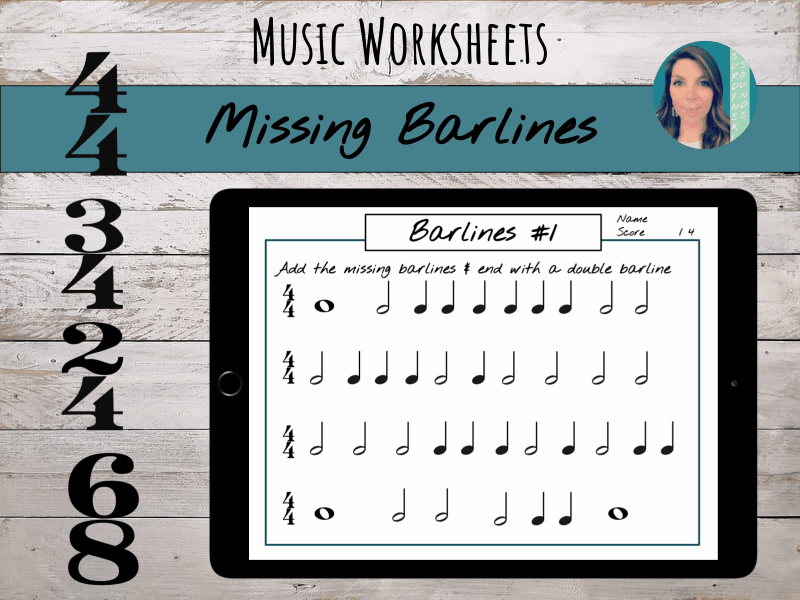Do your students have trouble with time signatures?
"What does 4/4 mean?" you ask in that sing-song voice that all students realize as an invitation to share what they know or think to be true.
That's when the ridiculousness sets in. Those hands shoot up with unrivaled, and sometimes undeserved, enthusiasm & perceptions of knowledge.
"Ooh, ooh! I means there are 4 measures in a song!"
"No, it means 4 measures in a line."
"Actually, it means each line has 4 measures and the song has 4 lines!"
SMH...
So we go back and review that the top number indicates beats per measure and the bottom number communicates that type of note is worth a single beat. Then the real work begins, right?
How do you help kids practice time signatures in multiple meters?
Okay, so let's Practice
Visual learners needs to see things multiple times, so reading & writing music is great practice. Worksheets like this can be very helpful because it not only allows for students to think critically, but for visual learners to see the concept in a variety of ways.
If you're looking for winter holiday versions, consider these worksheets: Ornaments & Menorah
Kinesthetic learners need to use manipulatives, their bodies, or instruments to feel the different meters.
- Walk or march to music in 2/4 and 4/4 like Sousa's "Stars & Stripes Forever" but skip to songs in 6/8 time such as "The Bear Went Over the Mountain"
Scarf Routines are incredible resources when practicing moving to music in different meters.- These are the scarves I use in my music classroom. This set has 28 scarves!
- My students love routines to pop music, pieces for AAPI month, & even classical music!
- Use manipulatives such as Legos to build measures in different meters.
- Consider games such as Time Signature Sorting, memory, or task cards. These are perfect for music centers or students ready for more independent practice.
Auditory learners
While it may seem like all students in music class must find a way to be successful as auditory learners, that's simply not the case.
Instead, find ways to add listening skills to centers or games you're already using in class. For example, use Time Signature Sorting Cards that encourage students to clap or play to check their work.
Rhythm task cards are begging for someone to play rhythms on instruments!
Treble, not trouble
In the music classroom, we want treble, not trouble. So, say goodbye to the trouble with time signatures by replacing the challenges with chortles, the groans with games, and problems with purposeful practice.
Let me know what you do to teach time signatures down below!



Comments
Post a Comment
If you have a Google account (such as Youtube, Gmail, Google Apps, Google+, Blogger), feel free to leave a comment or words of encouragement here! If you don't have a way to sign in, you can still leave a message on the main page under the 'Leave Jaime a Message' title on the right side of the page, below the calendar!